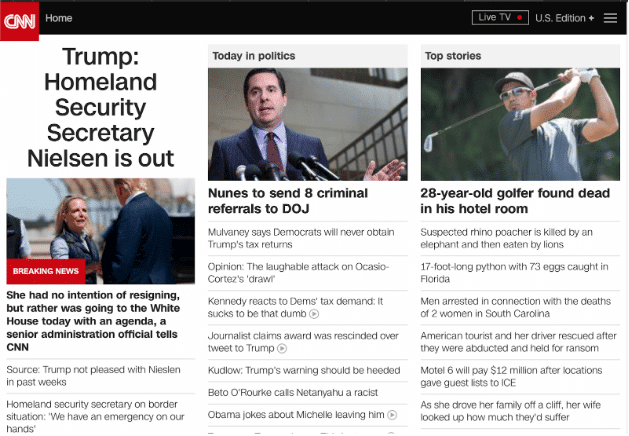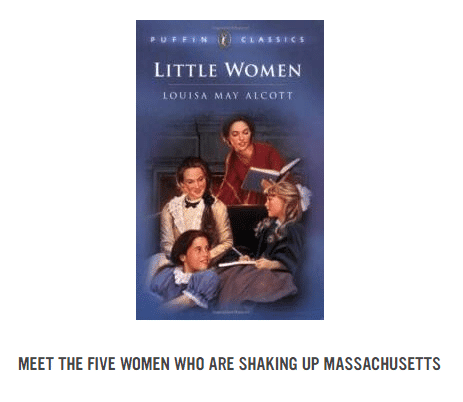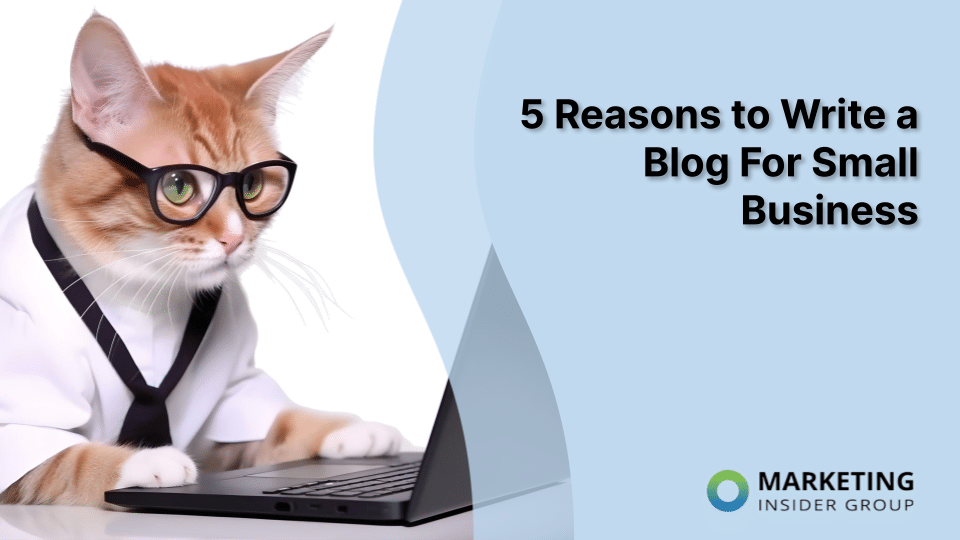
How to Write Headlines That Grab Attention and Convert
Imagine that you conduct a search on Google—perhaps for information on traveling to Iceland, a beginner’s tutorial for learning how to knit, or a healthier version of chicken alfredo. The query returns hundreds of thousands of results. Even though the search engine lists the most relevant results first, you will still need to look through them to determine which will provide the results you need. Your eyes scroll down the list, and you see one that catches your eye.
But why did it catch your eye? It was a well-written headline.
Your headline is often the first, and sometimes the only, chance to get your target customer’s attention. No matter how great your content may be, if your headline isn’t compelling enough for your prospects and customers to want to click through, it won’t get read or shared.
So what makes a killer title? The most important headline rule is that it should clearly communicate the value your readers will get by reading your content and deliver on that promise. You have to make sure the content is what your readers expected and isn’t just an eye-catching clickbait. You want to leave readers with a positive experience that encourages them to explore your content more.
How do you do that? Read on.
Quick Takeaways:
- The size of the headline says a lot about its importance.
- The headline needs to capture the reader’s attention, but not by falsifying or exaggerating the story.
- Write your headline after you write the article, so that you don’t miss out on any critical points.
- Make your headline as specific as you can.
What Goes into a Headline?
A headline is one of the most basic (and fundamental) elements of a news story, article, or advertisement. In a fast-moving world, consumers need to gauge whether or not they are interested in your content. If the headline doesn’t immediately pique their interest, they’re moving on. But well-written headlines engage the reader in seconds and make them want to read the story in full.
When it comes to traditional newspapers, the bigger the headline (in terms of font size), the more important the story is compared to others. You will still see this practice employed on some digital sites as well.

In the example above, the article “Trump: Homeland Security Secretary Nielsen is out” is the largest headline of the main three shown on the homepage. It is a breaking news story, which gives it precedence over the other stories.
Sometimes, an article will have a second headline, which is also known as a subhead. This headline is smaller in size than the main headline, and it is meant to provide additional information and support the main headline.
Let’s look a bit closer at what great headlines do for their articles.
In the example above, the article “Trump: Homeland Security Secretary Nielsen is out” is the largest headline of the main three shown on the homepage. It is a breaking news story, which gives it precedence over the other stories.
Sometimes, an article will have a second headline, which is also known as a subhead. This headline is smaller in size than the main headline, and it is meant to provide additional information and support the main headline.
Let’s look a bit closer at what great headlines do for their articles.
What Great Headlines Accomplish
We know that a well-written headline is what is needed to capture your reader’s attention. But you want to do it in a way that is correct and truthful. What we mean is:
- It is accurate. Don’t falsify the headline just to get readers interested. When they click on the article and discover that the headline doesn’t accurately reflect the content of the article, they will become frustrated and view your site in a negative manner. Continuing such a practice will drive your audience away from the site. Clickbait headlines are usually intentionally misleading or provide little insight as to the content of the article. Correctly implying the contents of the article is just as important.
- It is quickly understood. Do not make the headline overly clever or so confusing that your readers cannot understand it upon reading it for the first time. You never want your readers to feel stupid or that your article is “too intelligent” for them (unless your brand is meant to come off as a condescending know-it-all).
- It is written correctly. Few things make a reader distrustful right off the bat than a poorly written headline. Would you trust the contents of—or want to read—an article with the headline, “The top Too Things Your Doing Wrong When Losing Wait”?
- It sets the article’s tone. Similar to how the headline needs to accurately reflect the content of the article, the headline should also set the tone. Does the article address a serious topic? Is it a light-hearted, feel-good story? A do-it-yourself article?
For being only about 60 to 100 characters—or 16 to 18 words—long, a headline has a lot of responsibility.
Sometimes a great headline will break into our minds like a ray of sunshine peeking past the clouds. But most of the time we have to stare at a blank screen until words start to form. That’s why you need to take care when writing headlines for all of your articles.
How to Craft the Perfect Headline
Over the past few years, we’ve seen a exponential surge in content on the web. Competition for online attention is more cutthroat than ever, and as a result, marketers have come up with new strategies to get their content read. Clickbait headlines that end with, “…and you’ll never believe what happened next” have become the norm in today’s world. The primary purpose of a headline is to get the first sentence read, but while these tactics may grab attention initially, readers can eventually feel duped after realizing they fell for a clever marketing trick.
So how do you pique your audience’s interest every single time? Here are some techniques:
Wait Until Your Article Is Finished
You can’t exactly summarize something that isn’t yet written. While you think you may have something great in terms of a headline (and you might so keep it in your back pocket), you will not truly know until you’ve written everything you’ve wanted to say and edited it a few times. Think of the headline as the icing on the cake: You can’t put it on top until the cake has fully cooled.
Withhold Information
Your headline should offer enough information to entice the reader to read the article but not so much that the headline tells them everything they need to know. It’s like watching a movie trailer that gives away all the plot points.
Avoid Passive Voice
Whenever possible, avoid using passive voice. Active voice makes the writing stronger. Use short action verbs in the headline. When it comes to verbs, select one that precisely summarizes the action (versus using a close synonym).
Don’t Be Too Smart for Yourself
If you’re trying to be cute or clever, don’t. If it doesn’t come naturally, don’t force it. Your audience can tell when the headline (and you) are trying too hard, and it will detract from the content.
Use Emotion Liberally
Tugging at your readers’ heartstrings is a guaranteed way to get their attention. If it’s appropriate, consider the emotion(s) that your article stirs up in readers.
Utilize the Curiosity Gap
Give your audience enough information to understand the topic, but leave them wanting more. This type of headline is best to use when educating your audience on how to do something.
Example: “What Startups Can Learn from Watsi’s Wildly Successful Email Campaign”
Use the 5 Ws and H
Writing effective headlines starts with a basic understanding of your target audience. Much like you wouldn’t write an article or create a video without thinking about who would benefit from that content, your headline should also not be written without an intended target in mind. When you have an intended target in mind, your headlines will be written with more purpose and direction.
Your headline should clearly tell your readers what they can expect to take away after reading your content. What’s your Who, Where, When, Why and How of your content? Think about which of these is the most relevant and important to your readers that you want to highlight in your headline.
Make It Unique
If your headline sounds like everyone else’s, what reasons do your customers have in choosing your content over your competitors? And if your customers aren’t engaging with your content, chances are they likely wouldn’t consider your brand when making a purchase decision.
An attention-grabbing headline should be different and refreshing, and delights and speaks to your customers in a way that appeals to them – whether that’s being more personable and approachable, giving your brand more personality that resonates with your target audience, etc.
Make It Ultra-Specific
An effective headline should also be ultra-specific. Your customers should be able to read the headline and know that your content is targeted to them and has information they’re interested in reading about. If you don’t give your readers enough information to decide whether your content is relevant and interesting to them or not, your headline won’t get your target audience’s attention and they’ll just move on to other content.
Create a Sense of Urgency
Urgency compels reader to look at your article so they don’t miss out. It is most effective to include something that could be a common mistake. For example, “Are You Losing Sales by Giving Your Customers Too Many Options?”
This rule might not apply to every single piece of content you create, but where appropriate it is extremely effective. Give your target customers a reason to continue reading your content, and that if they don’t do it now, they’ll miss out on something that’s important to them.
Be Useful and Convey a Benefit
It’s not enough just being clever or entertaining, your headline should actually communicate your value add to your target customers. What benefits and value will they gain from reading your content? If your title doesn’t give your target audience a good reason to continue reading, they won’t make past the headline. The key for this strategy is to make sure you’re communicating a tactical takeaway.
Example: “How to Create Professional Client Proposals in Minutes”
Inject Emotion
According to research by CoSchedule, headlines with “emotional” words in result in significantly more social shares.
According to CoSchedule, “emotional marketing value” dates back to the 60’s and 70’s when government research scholar Dr. Hakim Chishti was studying the roots of several languages including Persian, Aramaic, Hebrew, Arabic, and Urdu. His research found that languages have underlying harmonics that are always interpreted with the same “emotional” reaction. An emotional marketing value score looks to asses how a group of words follow these emotional harmonics and how likely they are to elicit an emotional response from a reader.
Example: Tax Tips for the Second Half of the Year (Emotional Marketing Value of 0%)
Example: Things You Should Do Right Now To Prepare For Tax Season (Emotional Marketing Value of 45%)
Include Numbers
It may seem like every other article on the Internet begins with a number, but that’s simply because it works! Including a number directly informs the reader how much time they need to commit in order to read the full article.
Listicles also follow the “walk-jog-run” article writing principle well. If the content is sufficient, someone can slowly “walk” through the article, reading all the content in full. If someone is more pressed for time, they can “jog” through the article, skimming it at a faster pace. For someone who only has time for a quick read, they can “run” through the article, just reading the listicle headers and obtaining the main points.
Try the SVO Topic Ideation Method
Another formula that can help you create great headlines is the SVO Topic Ideation method. It’s a process of writing headlines with a simple approach with the subject first, verb second, and the object last. If you’re stuck with the flow of the headline or even the article, this formula can be a great place to start and get your brainstorming going.
Quick Templates to Generate Great Headlines
So here are 37 formulas that mix the tactics above to help get your next article read by your audience:
- Can ___ Really ___?
- Are You Losing ___ By [Doing Something]?
- What is ___and How Do I ___?
- What is ___ and Why ___?
- The Right Way to ___
- Should You Really___?
- The Best of ___ of [Date].
- Our Complicated Love Affair with ___
- [#] Common ____ Myths, Debunked
- [#] ____ Myths, Tested + Debunked
- [#] Common ____ Mistakes and How to Avoid Them
- How Can __ Help Me ___?
- Don’t ___ and Other Advice from ___
- The Case Against___
- The Case For ___
- Why We Can’t Truly ____, According to Data.
- The Real Reason People Keep ___
- The Real Cause of ___
- How One ___ Turned ___ Into ___
- Why ___ Is Still ___ Despite ___
- Why [Audience Group] Love ___
- What ___ Can Learn From ___
- How to ___ The Perfect ____
- Yes, ___ Needs ____. Here’s Why.
- Confessions of a _____
- Yet Another Reason Why _____
- How, Exactly, Does ___ Work?
- Does ___ Really ___?
- The Struggle Between ____ and ____
- This Company [Insert Impressive Statistic]. Here’s Its Secret.
- [Brand Name]’s [Executive Title] on How to ___
- [#] Best Pieces of Advice for [Audience Group] in [Year]
- Everything You Need to Know For Successful ____
- What to Do When ___
- How to Say No To ___
- Are You Really ___ Or Is It Just ___?
- [#] [Products, Solutions or Systems] [Audience] Can’t Live Without
Run the TACT Test on Your Headline
Now you’ve written a pretty solid headline—but you’re not done yet. Use the TACT Test, or the Taste, Attractiveness, Clarity, and Truth test. According to Columbia University, the TACT Test is as follows:
Taste—Is the headline written in good taste?
How your audience interprets your headline is important. You don’t want them to be offended because they read the headline the wrong way. Offending the reader will isolate them.
Attractiveness—Does it capture the reader’s attention?
A headline that doesn’t immediately engage the reader isn’t doing its job. It needs to be accurate and stimulate their mental taste buds, enticing them to click or scroll to read the full article.
Clarity—How well does it summarize the article?
An unclear headline is essentially a nail in the coffin: If your readers cannot make sense of what the headline is saying, then why would they bother to read the rest of the article (which may make just as much sense). The headline needs to be easily understood but also succinctly explain the article.
Truth—Does it tell the truth?
Throughout this article, we’ve reiterated how important accuracy is when it comes to article headlines (and content in general) because, like all relationships, trust is important in building your relationship with your audience. If you’re flat out lying to them, they will find out eventually—and they will turn away from your site.
Now, one by one, answer “Yes” or “No” to each question. If you answer “No” to even one question, you need to re-write your headline. Once you do, repeat the test—and do it again and again, if necessary, until you answer “Yes” to all four questions.
Ask yourself — which of these makes a better headline?

Lessons from a 3-Million Headline Study
HubSpot and Outbrain analyzed more than 3 million paid link headlines from Outbrain’s network of 100,000+ publisher sites to find out what kinds of headlines can increase CTR, reader engagement and conversions, and this is what they found:
Headlines That Compel People To Click
Headlines with the word “who” generated a 22% higher CTR than those without it, whereas “why” titles saw a 37% drop. When it comes to getting people’s attention, focus on who and not why when writing your headlines.
People respond to visuals, so it’s probably not surprising that titles with the word “photo(s)” also performed 37% better than those without this word.
Titles with bracketed clarifications, which describe the type of content the headline represents, performed 38% better than those without one. An example would look like this: The Secret to Killer Content Marketing [Webinar].
Headlines That Make People Not Click
The study found that headlines with the phrase “how to” performed 49% worse than titles without it. Titles with the word “tip” also saw a drop in CTR by 59%. Similarly, headlines that used the words “trick,” “simple,” “secret,” “best,” “magic” and “amazing” also saw a decreased CTR.
As well, titles that spoke directly to the readers using words like “you,” “your” and “you’re” performed 36% worse than headlines without these words. Headlines that conveyed a sense of urgency, such as words like “need” or “now,” also saw a decreased CTR.
Wondering why these words are such a turn-off for readers? Their overuse by click-baiters and publishers may explain why these once-popular keywords are ineffective – most readers no longer trust these words when used in headlines.
Headlines That Drive Reader Engagement
Once you have a reader’s attention and click, you want them to stick around and read more content on your blog or site. So what types of headlines can help you do that?
The word “amazing” was a click turn-off for most readers, but surprisingly the study found that using the word scored higher post-click engagement levels for those who do click through. While “amazing” may only be able to attract a smaller audience, they are likely going to be readers who are more engaged.
As with CTR, headlines with the word “photo(s)” also performed 59% better than those without it. As well, titles with bracketed descriptions performed 14% better than those without one. This goes to show that people will click and engage more if your headline is able to provide a clear picture of the value they’ll get out of your content.
Headlines That Dis-Engage Readers
Headlines that use positive or negative superlatives such as “worst,” or words like “need,” “tip,” “trick,” “simple,” “easy” and “secret” have a negative impact on engagement. For example, the words “worst” or “never” decreased page views per session by 59%.
Headlines That Convert
The ultimate goal of content marketing is to get your readers to take some action beyond their initial click, to engage with your content and ultimately convert into a customer. So what headlines can generate more conversions without being overly promotional?
While the word “need” hurts CTR and engagement performance, it actually drives conversion rates up. While it may feel pushy for many, it is what seals the deal for those who do convert.
Bracketed descriptions are also another headline winner, generating 112% higher conversion rates than titles without a description.
The Optimal Headline Length
The study also suggests that, if you’re trying to increase social shares, you want to keep your headlines shorter than 140 characters so they’re tweetable.
If you’re looking to rank in search, you want to use less than 65 characters so your headlines don’t get shortened in search results. You’ll also want to include the most important information early on in our title so readers feel compelled to click through and read.
As with everything else, what works well for one sector or industry may not work for another. You should always be prepared to test, iterate and see what works best for your content.
Start Writing Better Headlines Today!
As readers, we don’t know the time or effort the writer put into crafting the perfect headline for their article. What we do know is that it captured our attention and made us want to read the article.
Writing great headlines can be something of an art; some people just naturally excel, somehow finding the right combination of words to summarize the story. But as with everything, practice makes perfect. So even if you find you can’t write great headlines right away, by continuing to keep the aforementioned points in mind, it will start to become second nature.
Whichever headline writing techniques you’re working with, you’ll want measure your effectiveness as well as taking a look at what your competitors are doing. By understanding your past successes and what’s working for your competitors, you can find trends and best practices to help improve your headlines overtime and create your own formula for success.
The ultimate goal for effective headlines is to help your content cut through the noise and capture the attention of your target customers. Once you have their attention, your content also needs to meet the expectations and promises you make to readers in your headlines. If your content does not add any value to your target audience, it will not achieve the marketing goals you’d ultimately want your content to accomplish, no matter how effective your headlines are.
Having trouble engaging and converting new customers? Get in touch for some quick and easy ideas you can try right away!






